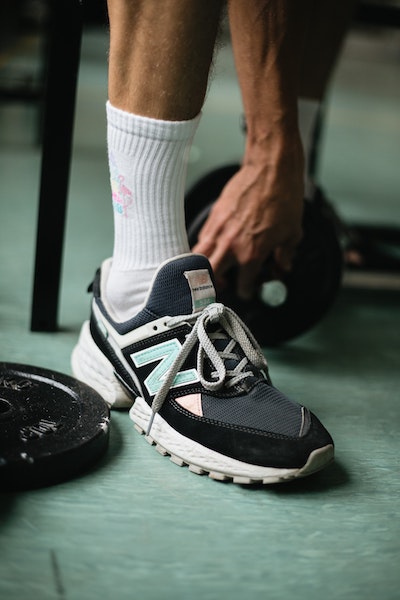 In recent years, compression socks have been gaining popularity as everyday socks. In the past, though, they were initially used in the medical setting to provide compression therapy. In fact, there is evidence that as far back as the Neolithic period, people have used compression therapy in the form of tight bandages to promote proper blood flow and heal injuries in the lower extremities.
In recent years, compression socks have been gaining popularity as everyday socks. In the past, though, they were initially used in the medical setting to provide compression therapy. In fact, there is evidence that as far back as the Neolithic period, people have used compression therapy in the form of tight bandages to promote proper blood flow and heal injuries in the lower extremities.
However, it wasn’t until the 1600s when physicians discovered the relationship between the slowing down of blood flow in the legs and the application of external pressure. This revelation led to the development of various tools that are now commonly used in compression therapy, including elastic bands and lace stockings.
These days, non-medical compression socks are typically used by people who want to provide their feet and legs with extra support as they go about their day, particularly those that spend most of their time sitting or standing. However, compression socks for men and women not only benefit those who are living an inactive lifestyle, but also people who engage in sports and other physically demanding activities. But how do these socks work, exactly?
How Compression Socks Work (and Why People Depend on Them)
In general, the additional pressure from wearing compression socks benefits the body by providing extra support to the veins. The deoxygenated blood flows back to the heart through the veins, and the veins in the legs work against gravity to pump the blood back to the upper body. The added pressure from the socks allows the veins to do their job without incurring damage in the process. Proper blood flow is key to preventing venous disorders like varicose veins and deep vein thrombosis as well as symptoms like swelling, inflammation, and pain in the leg.
Compression socks offer the same support to people who live sedentary and active lifestyles. People who have come to depend on these types of socks for support while in the middle of a demanding physical activity have reported that doing so allowed them to improve their physical performance. The compression around the legs not only promotes proper blood flow and prevents liquid from pooling in the lower extremities, but also provides support to the muscles.
Now that you know how they work and what they can offer, you may be wondering: how are they beneficial for those who engage in intense physical activity, and why are they so good for sports recovery?
Benefits Provided by Compression Socks During Physical Activities and Sports Recovery
Some athletes claim that wearing compression socks reduces vibration and stress on the muscles, limits the occurrence of soft tissue injuries, and prevents painful conditions like shin splints. Indeed, there are a few studies that record improved performance among athletes who choose to wear compression socks. Many athletes also swear that they can’t go back to wearing regular socks ever again.
Wearing compression socks after engaging in physical activity is something that many athletes should also consider, as there’s a growing number of studies that focus on how doing so can be beneficial to the body. For one, compression socks can help address muscle soreness and reduce the time needed for the muscles to rebuild and become stronger than before. This can allow an athlete to return to practice early, address weaknesses in their playing strategy and skills, and more quickly show how they’ve improved in their next games or matches.
Some Important Caveats Regarding the Effectiveness of Compression Socks
Take note that measuring muscle pain and relief from wearing compression socks is a subjective matter, as people experience and rate pain differently. There’s also the possibility that some athletes naturally feel the boost of enjoying physical activity and the psychological effect of putting on clothes that are designed specifically for exercise. All of these things can certainly help a person improve their performance.
That said, some of these claims about compression socks are backed by science, and there is plenty of anecdotal evidence to support the idea that wearing these types of socks can be incredibly beneficial. Still, there’s much research that needs to be done to find out if and exactly how wearing compression socks can affect the performance of athletes.
Finding the Right Compression Socks for Sports or Exercise
Just like regular socks, compression socks for men and women come in all forms, lengths, and designs. It’s important to find a pair or two that’s well suited to the wearer so that they can maximize the benefits of wearing these articles of clothing. If a pair of compression socks hinders proper circulation, causes skin irritation, and induces chaffing or bruising, it’s probably too tight and should not be worn again.
If you’d like to enjoy the advantages that these types of socks can provide, take your time to find a pair that offers comfortable levels of pressure. It also pays to do your research or consult your primary physician should you be interested in buying compression socks for health-related reasons. Once you’ve found the right pair, you can make the most out of them on your next game or the recovery period that follows.









![Daily Bite [Make]: Philly Cheesesteak Stuffed Bell Peppers](https://dashofwellness.com/wp-content/uploads/2013/01/Philly-Cheesesteak-Stuffed-Pepper-Daily-Bite-1-100x70.png)
